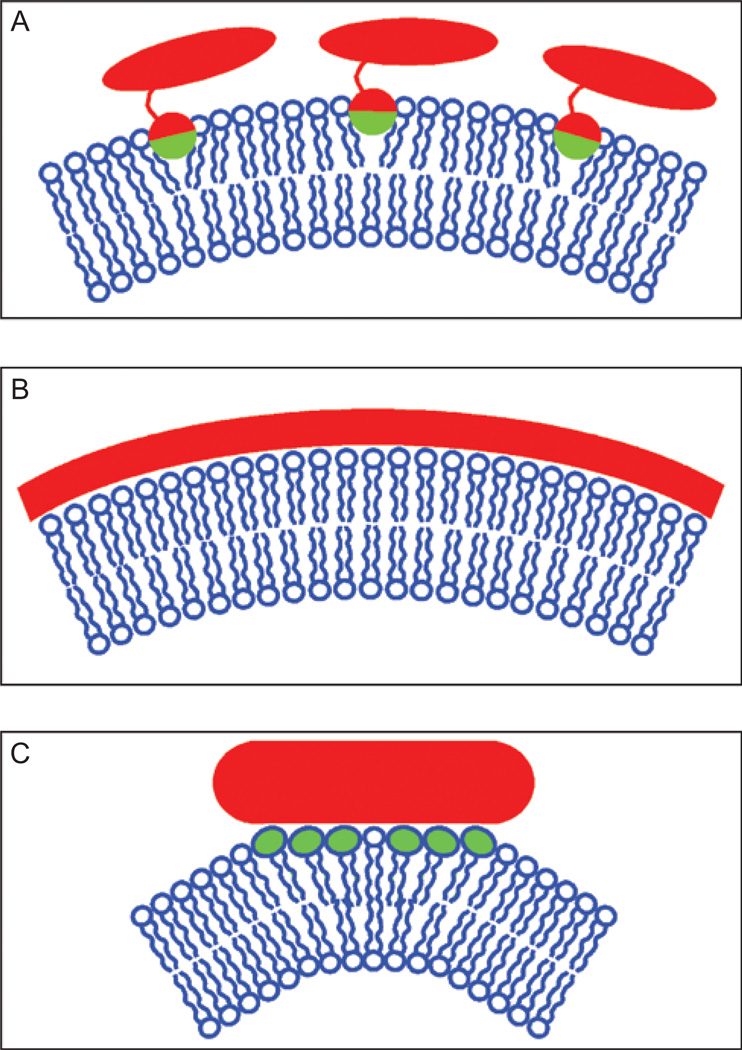Figure 2.
Mechanisms of membrane bending. (A) Some proteins deform membranes by inserting amphiphatic domains, often α-helices, into membranes. The hydrophobic part of the protein (shown in green) inserts partially into the membrane. (B) Proteins can form rigid scaffolds that either deform the underlying membrane or stabilize curvature in membranes that are already bent. Many scaffold-forming proteins oligomerize to form large rigid structures. (C) Proteins can also cause bending by affecting the distribution of lipids in the bilayer. Clustering lipids with large head-groups, for example, could cause membrane bending. Some proteins may also order lipids in the membrane and cluster to bend membranes. A color version of this figure is available online.

